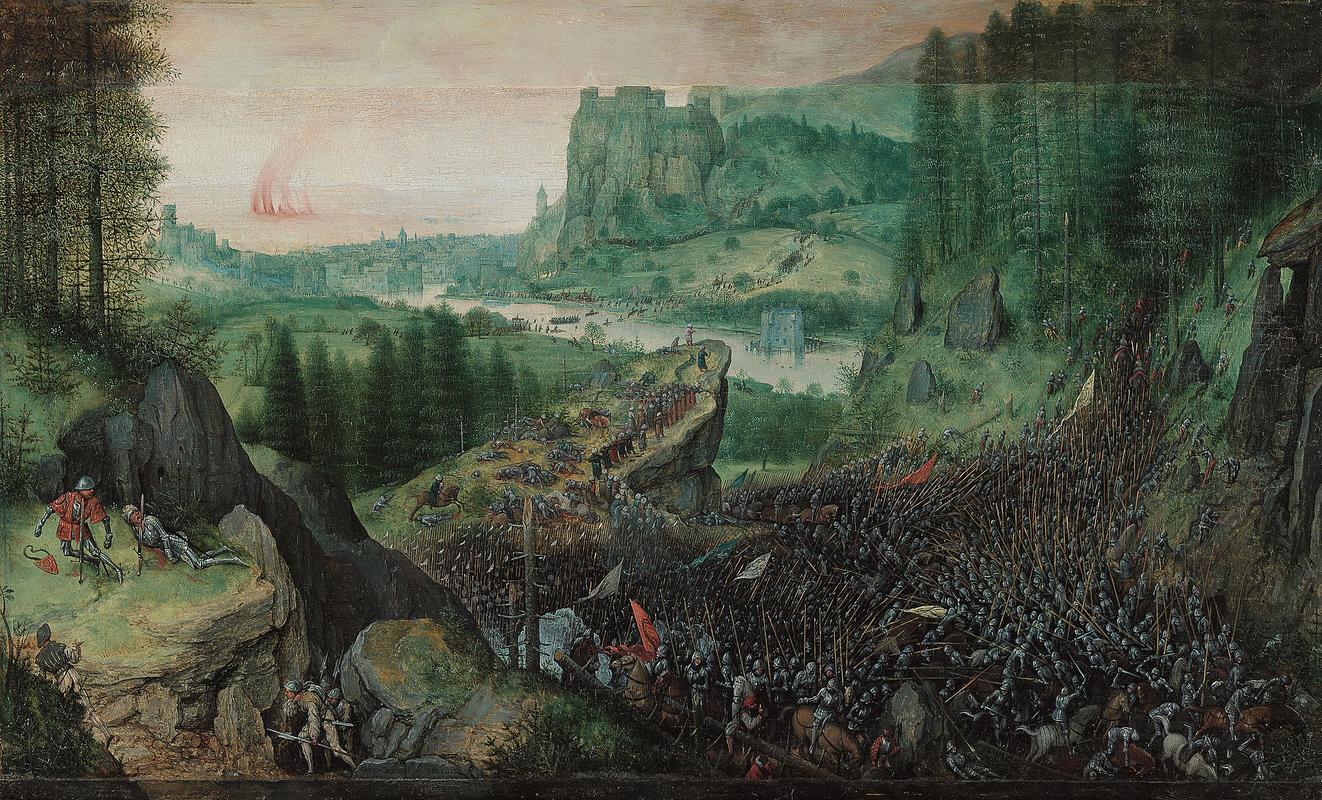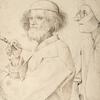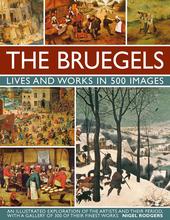More about The Suicide of Saul
- All
- Info
- Shop

Contributor
In his painting Suicide of Saul Pieter Bruegel depicted two of the seven total suicides to occur in the Bible.
King Saul of Israel and Judah led a kingdom constantly plagued by war with the Philistines. For the latter portion of his kingship Saul struggled with intense preoccupation over his inferiority to David, who had famously slew Goliath, the Philistine warrior-giant. After David slew Goliath, Saul began to lose favor in the eyes of the people, who would chant, “Saul has slain his thousands and David his tens of thousands.” Driven by his pride and his inferiority complex, Saul felt threatened instead of grateful. He made repeated efforts to marry David to his daughter until David finally accepted. Saul took the saying “Keep your friends close and your enemies closer” quite literally. After David’s marriage to his daughter (as well as before), Saul attempted to assassinate him at random moments in time. While there may never be one perfect method of parenting, I feel confident saying that marrying your daughter off to someone you then attempt to kill is not it.
Before the depicted battle of Mount Giboah against the Philistines, King Saul consulted with a witch who told him God was no longer operating in his favor. She also told him he would die in this next battle and that David would become the new king. Talk about a self-fulfilling prophecy. At the beginning of the battle, three of Saul’s sons died. He then found himself surrounded by encroaching archers who shot and wounded him. Knowing he was soon to die, Saul ordered his armor bearer to stab him. His armor bearer refused, so Saul took matters into his own hands, committing suicide by throwing himself onto his spear. Seeing Saul dying and the archers approaching, his armor bearer then became afraid and threw himself onto his own sword next to Saul.
Saul’s death in this scene is often considered a punishment by God for Saul’s pride. Pride is a common theme that Bruegel returned to throughout his career. For example, in his famous work The Tower of Babel, King Nimrod was also punished by God for his pride.
Like Bruegel often did with his religious paintings, he modernized the piece to fit into his own time. In this painting he adorned his warriors with 1500s silver armor instead of the armor that would have been worn in the 1000s BCE. The opposing sides were also depicted as confronting each other in organized formations of cavalry, instead of the chaotic approach typical of the 1000s BCE. The modernization of warfare in this work would greatly influence The Triumph of Death, a painting Bruegel did later that year.
This painting was actually a part of Peter Paul Rubens’ private collection before it changed hands to the Kunsthistorisches Museum during a post-death inventory of Rubens’ belongings in 1640. Presumably the painting was gifted to Peter Paul Rubens who was a close friend of Pieter Bruegel’s son, Jan Bruegel. Rubens and Jan Bruegel even collaborated together on a series of allegorical paintings called The Five Senses.
Sources
- "Bible Gateway Passage: 1 Samuel 31, 1 Samuel 1-5 - New King James Version." Leviticus 19:11 NIV - - Bible Gateway. Accessed August 13, 2018. https://www.biblegateway.com/passage/?search=1 Samuel 31, 1-5&version=NKJV.
- Finkelstein, Israel. "The Last Labayu: King Saul and the Expansion of the First North Israelite Territorial Entity." Academia.edu. Accessed August 13, 2018. https://www.academia.edu/1070440/The_Last_Labayu_King_Saul_and_the_Expa…
- Gisselberg, Susan. "Satire in the Triumph of Death: Pieter Bruegel and Humanism." Accessed August 13, 2018. http://www.ncurproceedings.org/ojs/index.php/NCUR2012/article/viewFile/….
- "Seven Suicides in the Bible." Bible.org. Accessed August 13, 2018. https://bible.org/illustration/seven-suicides-bible.
- "Sight - The Collection." Las Meninas - The Collection - Museo Nacional Del Prado. Accessed August 14, 2018. https://www.museodelprado.es/en/the-collection/art-work/sight/494fd4d5-….
- "Tower of Babel (1563)." Genesis Fresco, Sistine Chapel, Michelangelo: Interpretation, Analysis. Accessed August 13, 2018. http://www.visual-arts-cork.com/famous-paintings/tower-of-babel.htm.
Featured Content
Here is what Wikipedia says about The Suicide of Saul
The Suicide of Saul is an oil-on-panel painting by the Flemish Renaissance artist Pieter Bruegel the Elder, painted in 1562. It is in the collection of the Kunsthistorisches Museum, in Vienna.
The Suicide of Saul is an early attempt by Bruegel to reconcile landscape and figure painting. Despite the scale of the subject, at 33.5 cm × 55 cm (13.2 in × 22 in) it is rather small compared to his later landscape subjects, but has an "astonishingly dense and highly dramatic composition". If it is compared with one of his last works, The Magpie on the Gallows of 1568, its weaknesses are apparent: the foreground and background are not yet reconciled and the jutting outcrop of rock in the centre see 2nd detail is a Mannerist device which one may see again in The Procession to Calvary. However, the distant world landscape is seen through a shimmering haze, which seems to have the effect of emphasizing the foreground detail, and this does represent a new stage in the evolution of Bruegel's depiction of naturalistic landscape.
This appears to be the first time this subject was put in a painting, although there had been works in other media, such as manuscript miniatures.
The painting has been cut down, with a thin strip of c. 1cm removed along the bottom, and a rather wider one, c. 4cm, along the top. These portions were later re-added, with new pieces of fruitwood panel, in Vienna in 178-82. The transition is easily visible in the paint today. A third fallen figure with Saul and the armour-bearer was included in the underdrawing, but never painted.
Check out the full Wikipedia article about The Suicide of Saul














